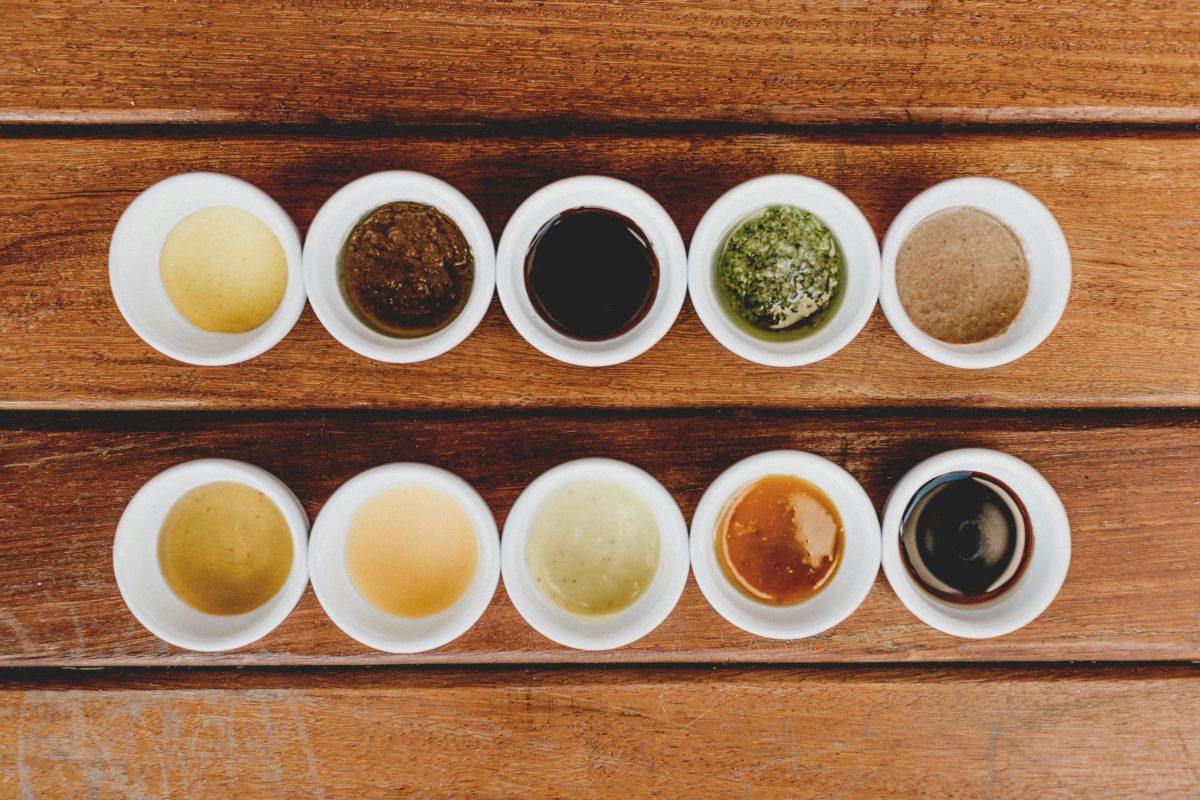Last Updated on: 14th July 2024, 09:31 am
Introduction to Cool-Down Routines

Cooling down after workouts is not just a ritual; it’s a necessity. This phase helps in reducing muscle soreness, enhancing flexibility, and ensuring a gradual decrease in heart rate. Each of these benefits plays a crucial role in your recovery and overall fitness journey. Imagine easing into restfulness, your body thanking you for the gentle transition from exertion to relaxation.
- Reduced muscle soreness means you can move on with your day without the nagging reminder of your workout.
- Improved flexibility is not just about reaching further; it’s about moving better, with more ease and less strain.
- Gradual heart rate decrease is the body’s way of shifting gears back to normalcy, safely and smoothly.
Embracing a cool-down routine is embracing a fuller, more complete approach to fitness. It’s the difference between feeling good and feeling great. It’s about giving your body the respect and care it deserves. So, as we delve deeper into effective cool-down routines for various workouts, remember: the best workout is one that includes a thoughtful beginning, a vigorous middle, and a soothing end.
Understanding Different Types of Workouts

High-Intensity Interval Training (HIIT)
HIIT stands as a powerhouse of fitness, blending short bursts of intense exercise with periods of rest or lower-intensity exercise. This method not only torches calories but also significantly improves cardiovascular health. The beauty of HIIT lies in its efficiency, making it a perfect fit for those with tight schedules.
Strength Training
Strength training, the architect of muscle building, focuses on using resistance to induce muscular contraction. It enhances strength, anaerobic endurance, and the size of skeletal muscles. By incorporating weights, resistance bands, or body weight, it lays the foundation for a stronger, more resilient body.
Cardiovascular Workouts
Cardiovascular workouts, often simply called cardio, are exercises designed to get your heart rate up and keep it there for a prolonged period. Whether it’s running, cycling, or swimming, cardio is crucial for burning fat, improving heart health, and increasing endurance.
Yoga and Pilates
Yoga and Pilates, though distinct, share a common goal: to enhance mind-body connection. Yoga, with its roots in ancient India, focuses on flexibility, strength, and breathing. Pilates, on the other hand, emphasizes posture, balance, and core strength. Both practices are pivotal for improving overall fitness and wellness.
Each workout type, with its unique benefits, contributes to a well-rounded fitness regimen. Understanding these differences is key to tailoring your cool-down routines effectively. A proper cool-down not only aids in recovery but also prepares your body for the next challenge, ensuring you get the most out of your fitness journey.
General Principles of an Effective Cool-Down

Gradual Reduction of Exercise Intensity
Key to an effective cool-down is the gradual reduction of exercise intensity. This approach allows your heart rate and blood pressure to return to baseline levels in a controlled manner. It’s akin to slowly coming to a stop after a high-speed journey, ensuring your body adjusts smoothly to the transition from exertion to rest.
Incorporation of Stretching
Stretching is an integral part of cooling down. It helps in alleviating muscle tension and preventing stiffness, promoting flexibility. By focusing on major muscle groups used during your workout, stretching can enhance your recovery process and prepare your muscles for their next workout session. This practice not only aids in physical recovery but also provides a moment of mental relaxation and reflection after the intensity of exercise.
Hydration and Refueling
Replenishing fluids and nutrients post-workout is crucial. Hydration aids in recovery, helping to flush out toxins and transport nutrients to your muscles. Coupled with refueling, which involves consuming the right balance of proteins and carbohydrates, hydration kickstarts the repair and rebuilding process of muscle tissues. This principle ensures your body has all it needs to recover efficiently and effectively, setting the stage for your next workout with optimal energy and strength.
Understanding and implementing these general principles into your cool-down routine can significantly enhance your recovery, improve performance, and reduce the risk of injury. Each workout, from stair climbing to HIIT, benefits from a tailored cool-down that respects these foundational elements. Embrace these practices to ensure your fitness journey is not only effective but also enjoyable and sustainable.
Cool-Down Strategies for High-Intensity Interval Training (HIIT)

After the exhilarating challenge of a HIIT session, your body deserves a smooth transition to rest. A well-structured cool-down routine is the bridge between the high of intense activity and the calm of recovery. Let’s explore how to effectively wind down from the peak of HIIT.
- Gradual Decrease in Intensity: Begin by dialing down the intensity. Swap the sprints for a gentle jog or a brisk walk. This step is crucial; it allows your heart rate to descend gradually, avoiding any abrupt shift that could strain your cardiovascular system. Think of it as easing your body back to its resting state, step by step.
- Dynamic Stretching: Next, incorporate dynamic stretching that targets the major muscle groups you’ve just worked. Focus on movements that enhance flexibility and mobility, such as leg swings and arm circles. These stretches facilitate muscle recovery, reducing the likelihood of soreness and stiffness. It’s about giving your muscles the attention they need to repair and strengthen.
- Breathing Exercises: Finally, don’t underestimate the power of controlled breathing. Deep, deliberate breaths help stabilize your heart rate and calm your nervous system. This practice not only aids in physical recovery but also instills a sense of mental peace and readiness for the rest of your day.
Integrating these strategies into your HIIT cool-down routine ensures a comprehensive approach to recovery. It’s not just about ending a workout; it’s about preparing your body and mind for what’s next, with grace and care. Embrace these steps to make the most of your HIIT sessions, ensuring each workout concludes on a note of fulfillment and well-being.
Cool-Down Techniques for Strength Training

After pushing your muscles to their limits with strength training, a proper cool-down is essential. This phase is not merely a capstone to your workout but a bridge to recovery, ensuring your efforts in the gym translate into strength and not undue soreness or injury.
Static Stretching
Begin with static stretching, focusing on the muscles you’ve just worked. Lengthening the muscle fibers helps to alleviate tension and promote flexibility. Hold each stretch for 20-30 seconds, allowing your body to relax and your heart rate to gradually decrease. This practice not only aids in recovery but also improves your range of motion, making it a cornerstone of an effective cool-down.
Foam Rolling
Next, incorporate foam rolling. This self-myofascial release technique works wonders in breaking up muscle tightness and knots. By applying pressure to specific points on your body, you aid in the recovery of muscles and assist in returning them to normal function. Foam rolling can be particularly beneficial for areas that are difficult to stretch directly, such as the deep tissues of your glutes or back.
Gentle Mobility Exercises
Finally, engage in gentle mobility exercises. These movements focus on the joints, enhancing their range of motion and reducing stiffness. Simple exercises like arm circles, hip rotations, and ankle rolls not only keep the joints healthy but also support the muscles’ recovery process. By incorporating mobility work, you ensure a holistic approach to your cool-down, addressing both muscle and joint health.
Integrating these techniques into your strength training routine ensures a comprehensive approach to recovery. Static stretching, foam rolling, and gentle mobility exercises work in harmony to soothe your muscles, enhance flexibility, and prepare your body for the next challenge. Embrace these cool-down strategies to maximize your strength training benefits, ensuring each session contributes positively to your fitness journey.
Cool-Down Approaches for Cardiovascular Workouts

After the heart-pumping intensity of cardiovascular exercise, a proper cool-down is the key to a swift recovery. It’s the period where your body shifts from high-energy output to a state of rest and repair. Let’s delve into the strategies that make for an effective cardiovascular workout cool-down.
Transition to Low-Intensity Movement
- Initiate the cool-down with slow-paced walking or cycling. This gradual shift helps your heart rate to decrease at a steady pace, preventing dizziness and promoting circulation. It’s a simple yet powerful step that bridges the gap between the end of your cardio and the return to stillness.
Stretching for Recovery
- Focus on stretching exercises that target the leg muscles. These stretches should be gentle and held for longer periods, allowing the muscles to relax and lengthen after the exertion they’ve just endured. This not only helps in reducing muscle tightness but also enhances overall flexibility.
Deep Breathing for Heart Rate Recovery
- Deep breathing exercises are an excellent tool for aiding heart rate recovery. By taking slow, deep breaths, you encourage your heart to settle back into its resting rhythm. This practice also oxygenates your body, aiding in the recovery process and instilling a sense of calm after the cardiovascular challenge.
Integrating these cool-down techniques after your cardio workout can significantly improve your recovery experience. Slow-paced movements, targeted stretching, and deep breathing work in concert to ensure your body is well-cared for post-exercise. Embrace these steps to enhance your fitness routine, making every workout as effective and enjoyable as possible.
Incorporating Mindfulness and Relaxation into Your Cool-Down

After the intensity of your workout, transitioning to a state of calm is essential. Incorporating mindfulness and relaxation into your cool-down can significantly enhance mental and physical recovery. Let’s explore how meditation, deep breathing, gentle yoga, and a serene environment can transform your cool-down routine.
Meditation and Deep Breathing for Mental Recovery
- Begin with meditation and deep breathing exercises. Sit comfortably or lie down, close your eyes, and focus on your breath. Inhale deeply through your nose, hold for a moment, and exhale slowly through your mouth. This practice reduces stress, lowers your heart rate, and prepares your mind for a state of relaxation. It’s a powerful tool for mental recovery, helping you to center yourself after the exertion of exercise.
Gentle Yoga Poses to Enhance Flexibility and Calmness
- Integrate gentle yoga poses into your routine. Poses like Child’s Pose, Cat-Cow Stretch, and Downward-Facing Dog are perfect for enhancing flexibility while also promoting calmness. These movements allow your muscles to stretch and relax gently, bridging the gap between the physical intensity of your workout and the tranquility of recovery.
Tips for Creating a Relaxing Cool-Down Environment
- Creating a relaxing environment is key. Choose a quiet space, dim the lights, and consider playing soft, soothing music. This setting enhances your ability to focus on relaxation and mindfulness practices. A serene environment supports a deeper connection with your body, allowing for a more effective transition from activity to rest.
By incorporating these elements into your cool-down, you not only aid your body in recovering but also ensure your mind benefits from the workout. Meditation, deep breathing, gentle yoga, and a calming environment work together to create a holistic cool-down experience. Embrace these practices to conclude your workout on a note of peace and fulfillment, setting a positive tone for the rest of your day.
In Closing
Cool-downs transform effort into excellence. They are the unsung heroes of fitness, fostering resilience in the face of physical challenges. By marrying the rigor of workouts with the gentleness of recovery, they ensure a balanced approach to health, enhancing both physical and mental well-being. This article has navigated through the nuances of effective cool-down routines, underscoring their critical role in a comprehensive fitness regimen. Embrace these practices as a commitment to your holistic health journey, paving the way for a future where every workout is not just completed, but concluded with intention and care.
Effective Cool-Down Routines for Various Workouts FAQs
Yoga or Pilates can be excellent options for a cool-down as they combine stretching, balance, and core strengthening exercises. These practices promote relaxation and can significantly enhance flexibility and muscle recovery when performed after more intense workouts. The focus on breathing and mindfulness in both yoga and Pilates also aids in calming the nervous system after physical exertion.
Cool-down routines can prevent injury by helping the muscles to relax and reduce tightness after intense physical activity. This gradual transition helps in avoiding sudden changes in blood pressure and heart rate, which can be stressful on the body. Properly executed cool-downs, including stretching, can also increase flexibility and reduce the likelihood of muscle strains and sprains.
Yes, stretching is an effective cool-down method as it helps in gradually relaxing the muscles and improving flexibility. It aids in the reduction of muscle tension and can prevent stiffness and soreness. Stretching after a workout when the muscles are warm also helps in improving overall flexibility.
A cool-down routine benefits mental health by reducing stress and promoting a sense of well-being through the release of endorphins. It provides a moment of relaxation and reflection, which can improve mood and decrease anxiety. This transition period also offers an opportunity to mentally transition from the intensity of exercise to a state of rest, aiding in overall mental balance.
A cool-down should ideally last between 5 to 10 minutes, depending on the intensity of the workout. This duration allows the body to gradually reduce heart rate and begin the recovery process. It’s sufficient time to stretch major muscle groups, especially those that were heavily involved in the exercise.
Cooling down after strength training is necessary to facilitate recovery and reduce the risk of injury. It can include light stretching of the muscles worked, which helps in alleviating muscle tightness and promoting flexibility. A cool-down phase also helps in gradually reducing the heart rate and preparing the body to return to its resting state.
Effective cool-down exercises after cardio workouts include walking at a slow pace, followed by static stretching focusing on the legs, back, and arms. This combination helps in gradually lowering the heart rate while also loosening the muscles that were most engaged during the workout. Incorporating deep breathing techniques during the cool-down can further aid in relaxation and recovery.
Cooling down is a broader term that encompasses various activities to gradually reduce the intensity of physical exertion, including light aerobic work and stretching. Stretching is a component of cooling down that specifically focuses on lengthening the muscles to improve flexibility and reduce tension. While all stretching can be part of cooling down, not all cool-down routines consist solely of stretching, as they may also include light aerobic activity to gradually lower heart rate.
A cool-down routine helps in gradually lowering the heart rate and prevents blood pooling, especially after vigorous exercise. It aids in the recovery process by reducing muscle stiffness and soreness. Engaging in cool-down exercises also helps in the transition of the body back to a state of rest more comfortably.
Hydration plays a crucial role in a cool-down routine as it helps in recovery by replenishing lost fluids during exercise and aiding in the removal of toxins from the body. Drinking water or an electrolyte drink post-workout can help restore hydration levels and support the body’s natural recovery process. Proper hydration also helps in preventing muscle cramps and facilitates better muscle recovery.
Orlando is a all round athlete from Australia, now resident in Germany. His sports of passion of American Football(Offensive line), weight training and indoor rock climbing where he uses his 195cm wing span to his advantage.



